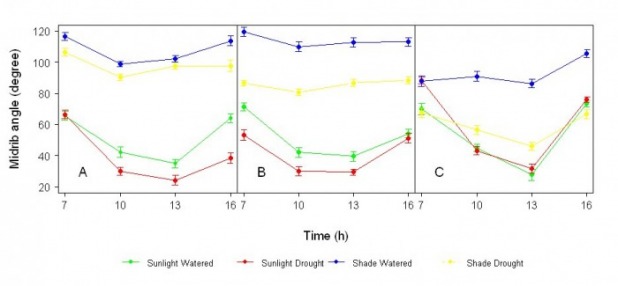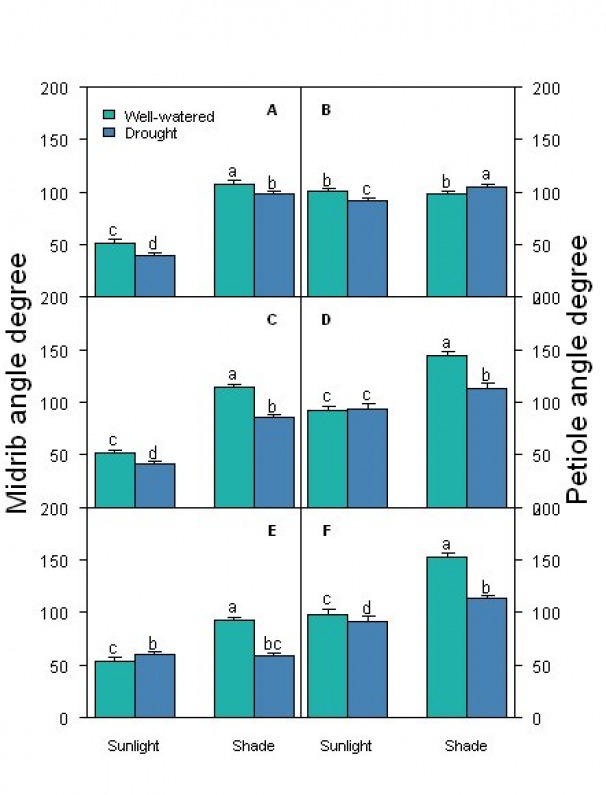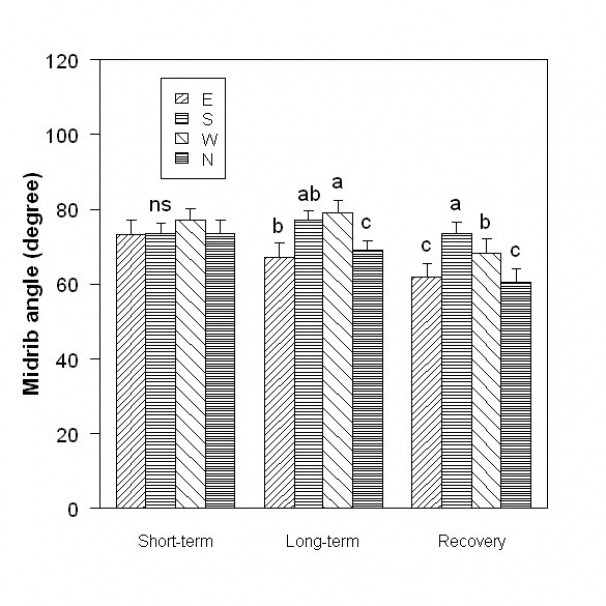figure 7. Diurnal changes of leaf midrib angle of R. pseudoacacia under different light and water treatments in the short-term stress (A), long-term stress (B) and recovery (C) period. Means (±SE) of 40 leaves were measured on different water and light treatments. The time scale gives the local time of the day
Leaf midrib angle significantly changed Leaf midrib angle was inclined upwards at noon and flattened or drooped in the morning and afternoon for all the treatments during the short-term stress period (Fig. 7A), and the midrib angle changing was larger in sunlight (55%) than in shade (15%). After the long-term stress, the leaf midrib angle diurnal trend did not significantly changed in sunlight, and there was no significant change in shade and drought or shade and well-watered treatment (Fig. 7B). The midrib angle changing reappeared in the shade treatments after the recovery period, especially for the drought-stressed plants (32%) compared to the well-watered plants (18%) (Fig. 7C).
figure 8. Mean values of leaf midrib angle and petiole angle in short-term stress (A, B), long-term stress (C, D) and recovery (E, F) period. Boxes represent means and error bars represent ± SE of the means (n = 160 for midrib angle and n = 40 for petiole angle). Values with different letters are significantly different at P<0.05 by Duncan's multiple range test
The midrib and petiole angles were larger in shade stress. Drought stress caused leaves to be inclined more vertically compared to those of the well-watered plants under the same light conditions.
figure 9. Mean values of midrib angle in different orientations during the whole period. The orientations defined by leaf azimuth angles were divided into east- (E), south- (S), west- (W) and north-(N) facing. Boxes represent means and error bars represent ± SE of the means (n = 120–190 for midrib angle). Values with different letters are significantly different at P<0.05 by Duncan's multiple range test. NS means not significant
The leaf orientation affected the leaf inclination after stress, although there was no significant difference during the short-term stress period. Themidrib angle of south-facing and west-facing leaves, as well as the petiole angle of east-facing and south-facing leaves, was larger because the locations of the pots were fixed after the experiment was carried out



